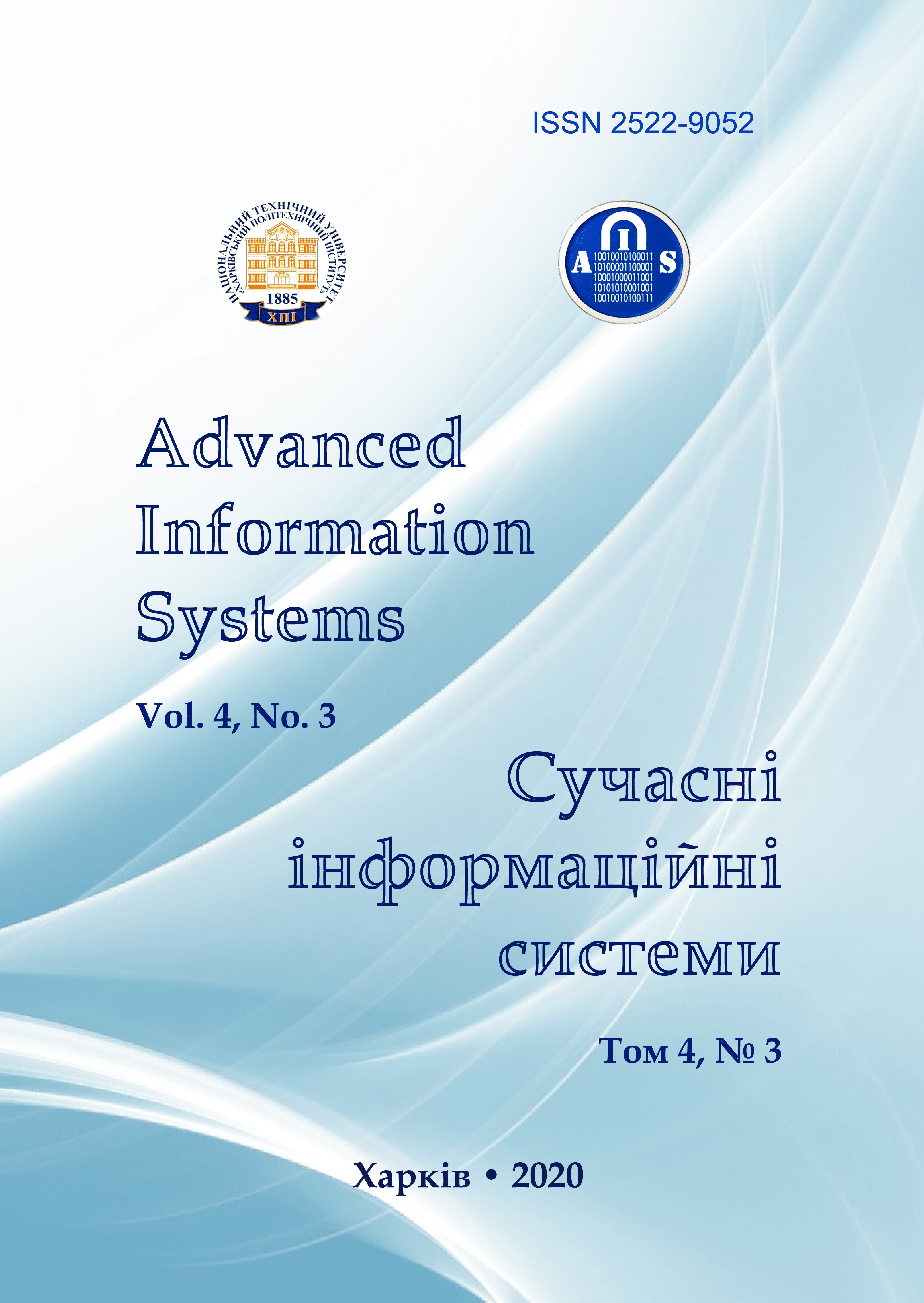ANALYSIS AND COMPARATIVE RESEARCHES OF METHODS FOR IMPROVING THE SOFTWARE
Main Article Content
Abstract
Article Details
References
Kazarin, O. V. (2003), Security of computer systems software, MGUL, Moscow, 212 p.
Podshivalov, G.K., Ternovskov, V.B., Demidov, L.N. and Tarasov B.A. (2016), “Economic security in the face of uncertainty”, Economics: yesterday, today, tomorrow, No. 2, pp. 242-257.
Savin, R. (2007), Testing Dot Com or A Manual on Bug Abuse in Internet Startups, Delo, Moscow, 312 p.
Tikhanychev, O. V. (2018), Theory and practice of decision support automation, Editus, Moscow, 76 p.
Yuzvovich, L.I. and Yudina, E.A. (2014), “An integrated approach to the study of the essence, principles and methods of financial planning at enterprises in the economic system”, Fundamental research, No. 9, pp. 1596-1601.
(2020), CWE List Version 4.1, available at: https://cwe.mitre.org/data/.
Gavrylenko, S., Chelak, V., Hornostal, O. and Vassilev, V. (2020), “Development of a method for identifying the state of a computer system using fuzzy cluster analysis”, Advanced Information Systems, Vol. 4, No. 2, pp. 8-11, DOI: https://doi.org/10.20998/2522-9052.2020.2.02.
Imtiaz, N., Murphy, B. and Williams L. (2019), “How Do Developers Act on Static Analysis Alerts? An Empirical Study of Coverity Usage”, 2019 IEEE 30th International Symposium on Software Reliability Engineering (ISSRE), Berlin, Germany, pp. 323-333, DOI: https://doi.org/10.1109/ISSRE.2019.00040.
Ishizaka, Alessio and Philippe, Nemery (2013), Multi-criteria Decision Analysis: Methods and Software, SAP Labs – China, Shanghai, PRC 2013, 310 p.
(2020), ISO/IEC 27034-1:2011 Information technology – Security techniques – Application security, available at: https://www.iso.org/standard/44378.html.
(2020), ISO/IEC 15408-1:2009 Information technology — Security techniques — Evaluation criteria for IT security, available at: https://www.iso.org/standard/50341.html.
(2020), New ISA/IEC 62443 standard specifies security capabilities for control system components, available at: https://www.isa.org/intech/201810standards/.
O’Connell, and James, L.M. (2013), “SzalmaRoc-Estimator Software and Roc Analysis”, Proceedings the Human Factors and Ergonomics Society Annual Meeting, Vol. 57 is. 1, pp. 1432-1434.
Sanjab, Anibal and Walid, Saad (2016), “On bounded rationality in cyber-physical systems security: Game-theoretic analysis with application to smart grid protection”, Computer Science, Mathematics, 2016 Joint Workshop on Cyber-Physical Security and Resilience in Smart Grids (CPSR-SG), Vienna, 2016, pp. 1-6, DOI: https://doi.org/10.1109/CPSRSG.2016.7684101.
(2020), OWASP Proactive Controls, available at: https://owasp.org/www-project-proactive-controls/.
Semenova, Z.V., Danilova, O.T. and Kovshar, I.R. (2019), “The analysis of security of a stack of technologies for development of web-resources”, Dynamics of systems, mechanisms and machines, Vol. 7, No. 4, pp. 98-105.
Sinha, S.M. (2006), Mathematical Programming. Theory and Methods. Elsevier Science, 572 p.
Zhang, Yuchen and Liu, Jing (2019), “Optimal Decision-Making Approach for Cyber Security Defense Using Game Theory and Intelligent Learning”, Security and Communication Networks Volume, Article ID 3038586, 16 p., DOI: https://doi.org/10.1155/2019/3038586.
